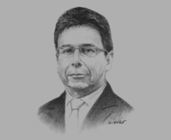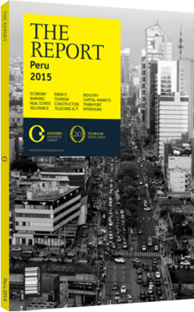Carlos Herrera, Executive Director, ProInversión: Interview

Interview: Carlos Herrera
Two large infrastructure tenders were recently awarded as single projects. To what extent might this approach restrict participation?
CARLOS HERRERA: The main factors behind the tender process decisions are technical and financial. For some megaprojects that are technically complex, such as Metro Line 2 and the Sur Peruano gas pipeline, having a single tender for both construction and operation guarantees better execution. Some other projects should be divided. For example, the Longitudinal de la Sierra highway has been divided into five sections (two public and three private) due to high demand risk. It is true that choosing only one tender carries risks, but these are taken into consideration and covered in the contract. Each mega-project has a different level of difficulty and must be dealt with in a specific way.
Are resources sufficient to service the 60 unsolicited proposals (UPs) submitted in recent months?
HERRERA: In the end, UPs turn out to be public-private partnerships (PPPs). A UP is a process whereby the government receives project proposals from the private sector. Not all of them will be carried out; some may not match the government’s priorities. Another factor considered in the case of co-financed UPs is the fiscal impact. To respect the fiscal discipline Peru has had for the past 20 years, there is a budget limit for PPPs at 7% of GDP. We consider UPs to be an important tool for infrastructure development, especially with regard to social infrastructure.
According to the new UP system regulation, the government will receive proposals in the first 45 days of 2015 What plans are there for opening up telecoms?
HERRERA: For more operators to be included in the market, we first need to go through a period of maturation and to improve the fibre-optic grid at the national level. The Ministry of Transport and Communications has commissioned seven regional broadband grids, divided into two blocks, which will be awarded in 2015. The focus now needs to be on improving social acceptance of telecoms infrastructure, especially in the provinces. We have thus created regional forums where we show communities how they will benefit from investments in their areas. Furthermore, we tell local authorities they need to act as facilitators of investment.
Can the $18bn in PPPs be complemented by UPs and the “Works for Taxes” project, which allows private sector companies to pay a portion of their tax bill by investing in public infrastructure projects?
HERRERA: All three models should be used if our goal is to close the infrastructure gap. Big projects have been identified to be promoted as PPPs by the government, including: the Amazon waterway, which will not need huge investment but will greatly increase cross-border connectivity; 1200 MW of hydro-energy with an estimated investment of $3bn; the 200-MW Quillabamba (Cusco) thermoelectric plant; sections four and five of the Longitudinal de la Sierra highway; a water supply project south of Lima for around $400m; and several projects in health and education. The main project for 2016 at the moment is Metro Line 3 for $5bn.
Have tenders for energy and transport infrastructure reduced the priority of health and education?
HERRERA: At first, PPPs were focused on infrastructure because this is requisite for overall economic growth. Peru could not generate wealth without a minimum base of transport and energy infrastructure. This was not a slight towards the social sectors, which were looked after by public works and, since 2008, by Works for Taxes projects. Once the basic infrastructure has been set up, we will focus on promoting social infrastructure. For this we need to take advantage of knowledge from foreign companies from Canada or Spain that can help speed up the learning process. In the short term, eight hospitals will be built. Another project to aid social inclusion will be the government’s sale of almost 500,000 ha of farmland over the next five years.
You have reached the limit of premium articles you can view for free.
Choose from the options below to purchase print or digital editions of our Reports. You can also purchase a website subscription giving you unlimited access to all of our Reports online for 12 months.
If you have already purchased this Report or have a website subscription, please login to continue.

